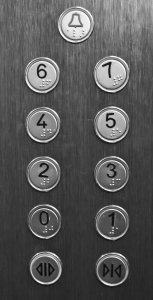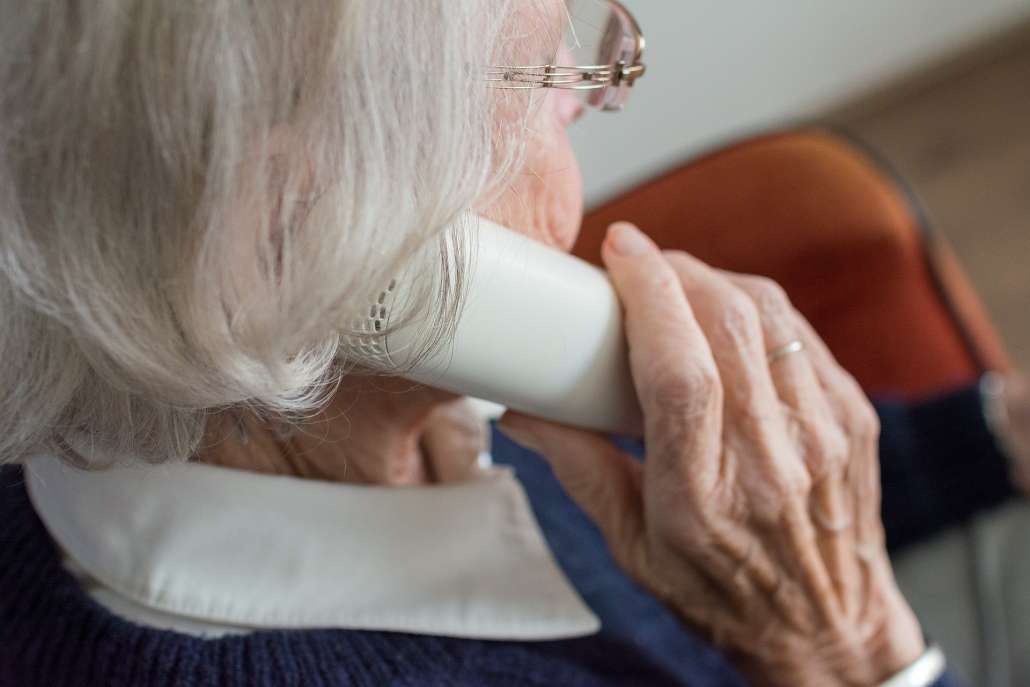
I’ve become pretty familiar with phone trees since I started providing phone captioning services for people with hearing disabilities.
This service is provided free from the Federal government through the relay service tax on every phone bill. I’ve observed many users struggle with automated answering tools businesses use to reduce the number of live customer service agents.
Here in Arizona, “customer care centers” (aka call centers) used to be a thriving industry that’s rapidly being replaced by this type of phone automation.
Trim the Phone Tree
Phone trees are often programmed to encourage people to go online for their customer service needs.
This is a problem for many elderly customers who can’t, or won’t use the internet for a myriad of reasons. Their phone is their main connection to the outside world.
I’ve seen two trends in “customer care.” Neither are good for older people who rely on phone services:
- Long hold times interrupted with messages to visit a website
- Complicated phone instructions requiring several inputs
Both include automated messages of varying speeds and at different volumes. This is definitely not senior-friendly.
The Phone Tree System: Internet or Else!
I’ve been amazed at how patient many people are who remain on hold for a half-hour or more to settle a problem with credit cards or bank accounts. In many cases, they have no choice because they have trouble navigating internet sites or they don’t go online at all.
Yes, such people exist and they still deserve to be served. Pushing everyone to use web-based solutions is a terrible idea. It’s frankly rude to those can’t access the internet or simply don’t understand it. Or who, like one of my clients, refuses to “learn computers” but still runs a thriving business as offline as possible.
Some phone trees are real hornets’ nests.
I’m fairly internet savvy so if I find a website to be burdensome, I can only imagine what it’s like for someone who retired around the time the internet took off. Frankly, I’ll opt for a live agent when a company’s automated customer service process – whether online or over the phone – is so onerous it’s easier to put the phone on speaker and do something else while I’m on hold.
Then there is voice-recognition technology that makes the situation worse. Aging can affect a once-booming voice, but I’ve heard people quite clearly speak their account numbers only to be told, or interrupted before they finish, that “I did not understand you. Please try again.”
If there’s a problem understanding a caller, send the call to a live agent after two attempts.
Phone Trees Are Too Fast for Many Customers
Older people take longer to process information and phone trees tend to be very rushed. There’s an inevitable delay for people who read captions generated on their phones and often find themselves in a vicious cycle of repeat-wait-repeat-wait-disconnect.
Customer-facing businesses need to understand there are times when live, fluent customer service agents are necessary, even for the non-elderly or not-yet elderly.
Very often, an older person will ask for the automated system to repeat something and are put on hold, where they get a less-than-helpful recommendation to “resolve the problem faster” by going online to visit:
“www.VERYLONGBUSINESSNAME.com/customercare and click on the Help Me tab at the top right-hand side of the page.”
A person who doesn’t want to go online, or can’t, may get an estimated wait time as long as 40 minutes. Seriously.
I’m glad to report that most people who wait for a live agent are gracious to them. Agents are usually (but not always) polite as well, even if they have to be told to speak more slowly.
Some Phone Trees Have Too Many Branches
Phone trees that force extensive interaction with the phone are the worst. Again, much of the problem is with instructions spoken too fast plus extremely limited time for callers to respond.
I’ve been surprised myself when I’m about to respond to a phone prompt only to hear “invalid response” because I haven’t entered the information yet. I’m still pretty spry but sometimes I have to take off my glasses to read an account or credit card number. This nanosecond of activity is apparently too long for some phone automation systems.
Now think of older people who move more slowly to put on or take off glasses or reach for a pair. They will never make the automated system happy.
Those who are waiting for a caption to come through sometimes don’t even get to finish reading the instructions before the command “invalid input please try again” comes through. This understandably flusters them. So they either press zero for an operator to be put on a (usually) long hold, or just hang up. For what it’s worth, I’ve noticed that men hang up more often and quicker than women.
Calling the doctor? Be prepared to memorize a long list of “options”

Press one if you’re calling from a physician’s office…
Physician offices have long phone trees with a lot of “options” to remember. Here’s a typical example:
- “If you are a physician or calling from a physician’s office, press one.”
Do calls from other doctors’ offices go to some special Bat Phone that’s answered right away? Why do physician offices get priority? Shouldn’t patients be the center of the medical universe?
2. “If you are a pharmacist, press two.”
3. “If you are calling for a prescription refill, please hang up and contact your pharmacy.”
4. “If you are calling to schedule, change, or cancel an appointment, press three.”
5. “If you need to speak to a nurse, press four.”
- If you need to speak to Dr. Dre’s medical assistant, press 127594.
- If you need to speak to Doc Ice’s nurse, press 460367.
- If you need to speak to Dr. John’s PA, press, 9904523.
Actually, my sample names are too short. Many doctors have really long names. To continue:
6. “If you are calling for a referral, press five.”
7. “If you are calling for a medical records release, please fax your request to 212-555-4593.”
8. “If you are calling to speak to our billing office, please hang up and dial 1-888-555-4529 and dial extension 460285.”
9. “To repeat these options, press six.”
Is this really necessary? How about offering a short menu like “Patients and their representatives press one. All other calls press two” and go from there.
Phone Trees Don’t Have to Be a Burden
I get it. Companies like automation and there probably is no going back.
Going forward, more seniors will be perfectly fine using the web to schedule doctor appointments, check their financial statements, and order take-out.
But right now, many phone trees expect too much from callers. If hiring someone to answer the phone isn’t an option, businesses that rely on this technology can make a few changes that make them easier to live with:
- Drop the long-winded menus
- Use the same voice throughout the menu
- Slow down the tempo!
- Keep an even volume
- Don’t bother with messages to entertain or inform people on hold.
- They can confuse callers who think they’ve been connected to a sales office.
- When a live person does pick up, the person waiting may not realize he’s no longer on hold! This sometimes results in the call being disconnected.
It’s OK to offer an online option to take care of customer service issues, but a customer should never feel like waiting for a live agent is some kind of punishment. Use a creative solution like an automated callback or a voicemail message that will be returned within one business day.
Remember, seniors talk to each other about how they’re treated not only by their children, but by doctors, financial advisers (who usually have excellent phone skills), and the customer service they get from services like credit cards, banks, and cable companies or DISH.












